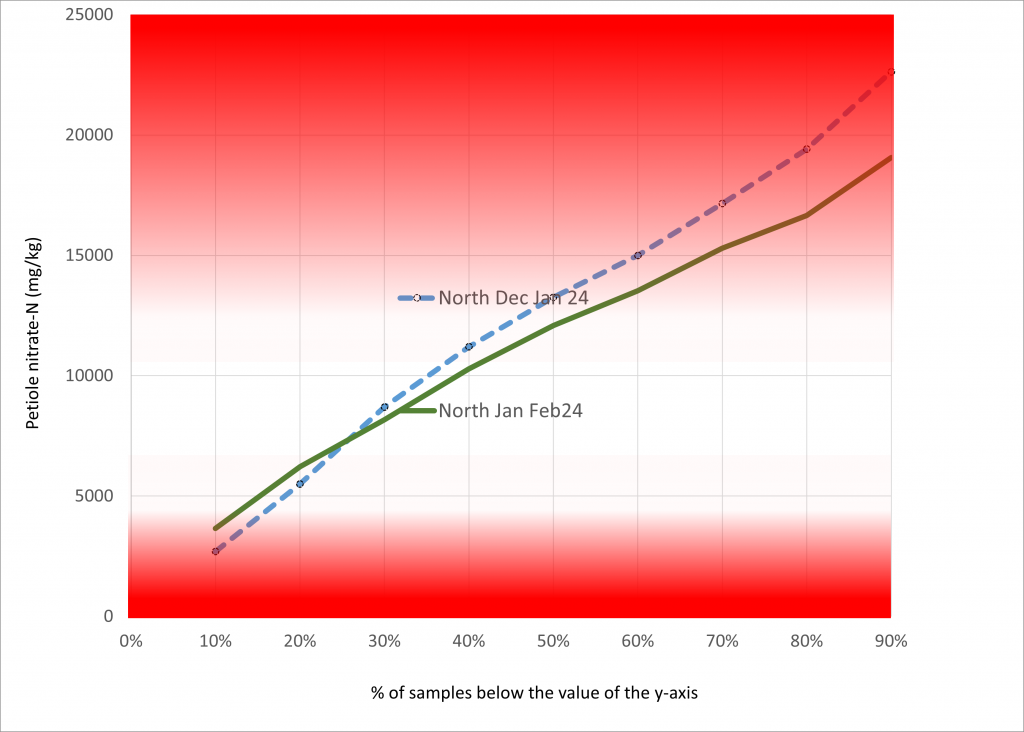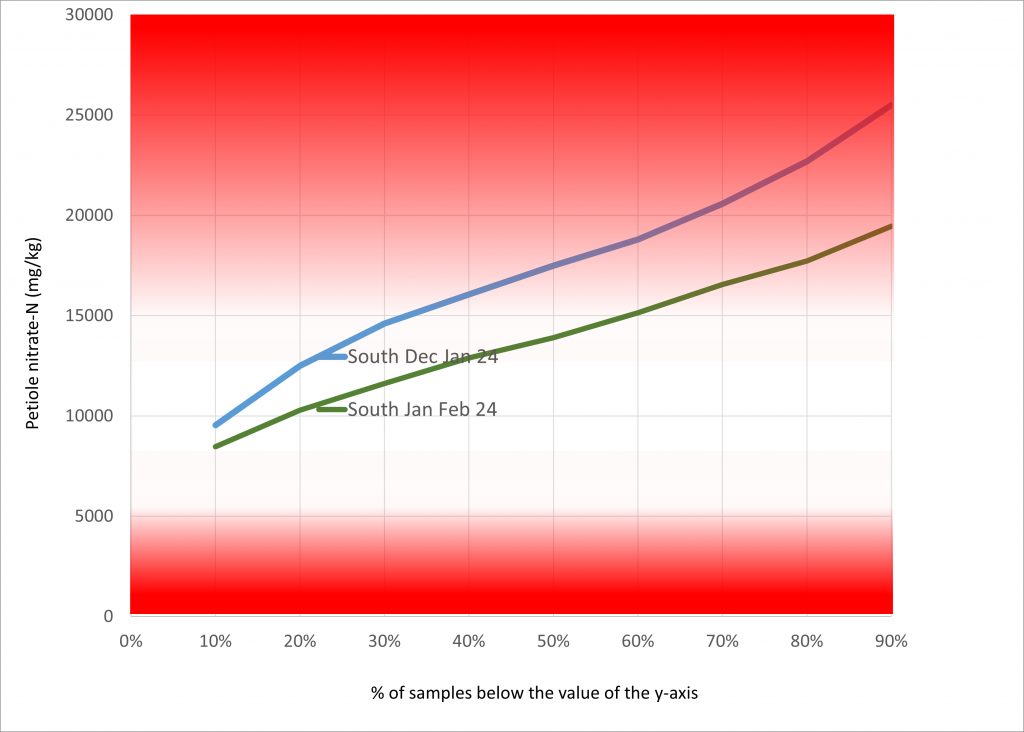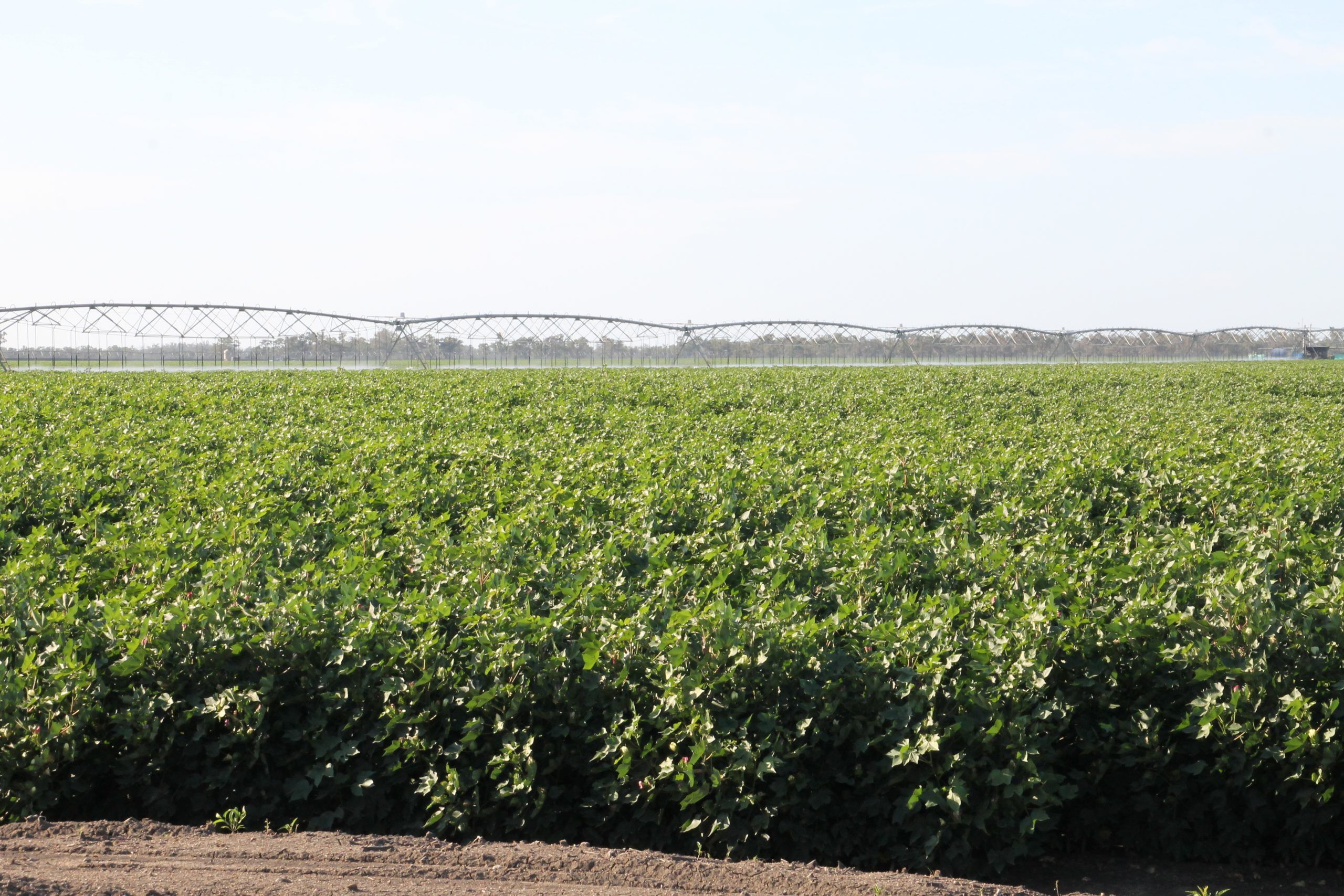While many crops will be past the time when significant N fertiliser rate decisions are likely for this season the petiole N data is some interesting comparisons that can be made between the apparent crop N status of the Northern and Southern crops, and comparisons with trends data from the Dec-Jan period commented on in my last report.
The first difference between regions is the southern crops is on average 50 % higher petiole nitrate- N concentration compared to the north. This is most likely a reflection of crop stage difference with the northern crop past peak flowers when the N supply should be lower and the southern crop mid to peak flowering at sampling time. This is also reflected in the relatively larger drop in N since the last sample, indicating crop approaching peak N uptake rates.

The contrast between sampling dates in the northern crop suggests that the N uptake rate slowed as the crop passed peak flowering. The other interesting feature of the northern crop data is the kick-up in N status for the lowest 20 % of the sample compared to the Dec -Jan period. I can only speculate as to the cause, probably related to affirmative action by crop managers based on the information provided from samples that crops were likely running out of N, and they added a bit more. It is unlikely that crops could access previously unavailable sources of soil N this late in the season.

The crop N status comparison between samplings in the south shows a hint of N application in the lowest 30 % of crops in the Dec-Jan period (blue line). The slope of the green line for the Jan -Feb period has flattened, indicating a slowing of the rate of crop available N depletion.
My next report will most likely be when most cover the period from peak flowering to open boll. While the number of samples taken will likely be less , understanding crop N supply at this stage helps understand likely behaviour during cutout and defoliation.
For those in areas that can use “grow one” as a management strategy, petiole N at this stage can be useful in planning N management for the “grow on” phase.

